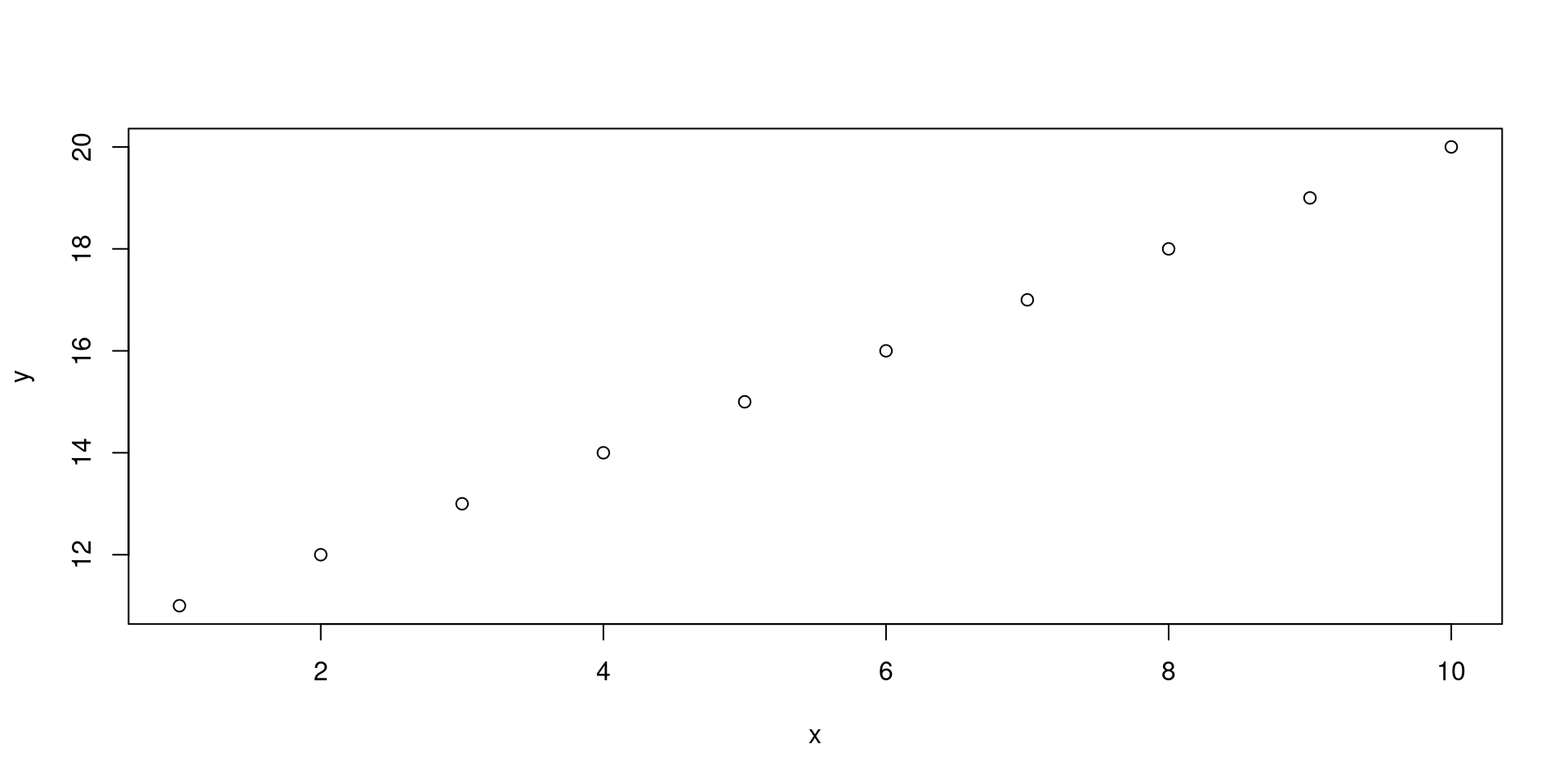Reproducible Research
with Quarto
May 1, 2024
Lecture Objectives
- Understand and describe literate programming
- Discuss markdown a text-driven authoring format for writing documents.
- Create dynamic reports using Quarto (next version of RMarkdown)
Code for Humans
Wrong Data
Hello James,
Prof. Toad* gave us an old copy of the dataset. Could you redo the analysis on the updated data? Let’s aim to meet tomorrow for coffee to discuss the results. Are you free at 9 AM?
Best,
Steven
* Identity changed to protect the innocent.
In the Wild: Data Science Gone Wrong
Retraction Watch by Adam Marcus, Ivan Oransky, and Alison McCook Monitors for authors retracting their paper from a journal.
One such case of a paper being retracted due to an Excel error was the Growth in a Time of Debt by Reinhart & Rogoff.
- The error was found by graduate student Thomas Herndon and co-authors Michael Ash, and Robert Pollin.
- They published a critique highlighting the error.
- Herndon appeared on the Colbert Report to discuss their findings.
How can we create a report that
contains code
and
updates if data changes?
Replicable
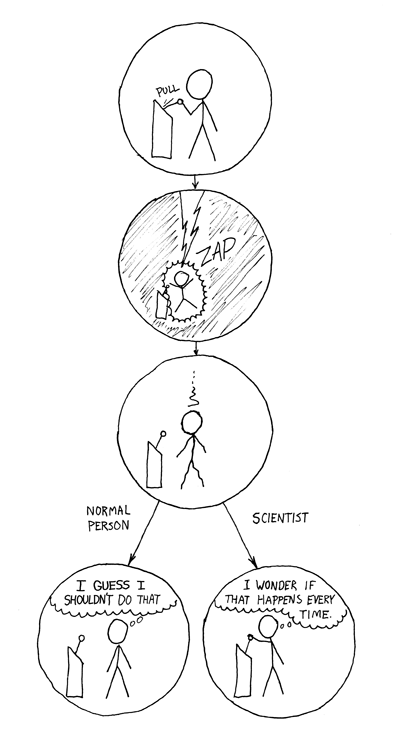
Replicability is present only when the exact same experiment is performed at least twice leading to the same conclusion. This requires each experiment having the same data collection and analysis mechanisms.
Reproducible
Reproducibility exists if there is a specific set of computational functions/analyses (usually specified in terms of code) that exactly reproduces all of the numbers in a published paper from raw data.
There has been a notable push to move toward Reproducibility within Statistics. In particular, the Journal of American Statistical Association (JASA) recently created a formal guide for reproducibility and appointed their own Associate Editors of Reproducibility!
Elsewhere, the scientific community discussed reproducibility at length in a special edition at the Science journal.
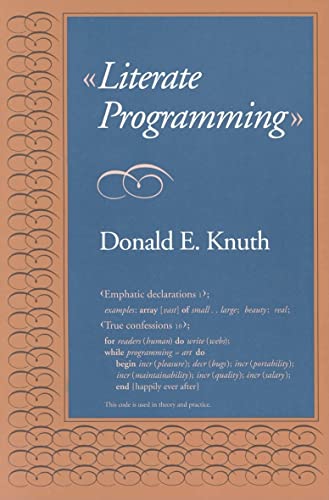
“Let us change our traditional attitude to the constructions of programs: Instead of imagining that our main task is to instruct a computer what to do, let us concentrate rather on explaining to human beings what we want a computer to do.”
— Donald Knuth in Literate Programming (1984) on pg. 1
Literate Programming
The notion of encouraging programmers to interleaving code within narrative content that follows the natural logic and flow of human thought.
Text
Code
Output
Text
Quarto in the World: Books
Quarto in the World: Website
https://mine-cetinkaya-rundel.github.io/quarto-tip-a-day/ | GitHub
Quarto in the World: Academic Papers
Overview of a Quarto Document
Create a Quarto Document
In the top left, click the White Plus and select “Quarto Document…”
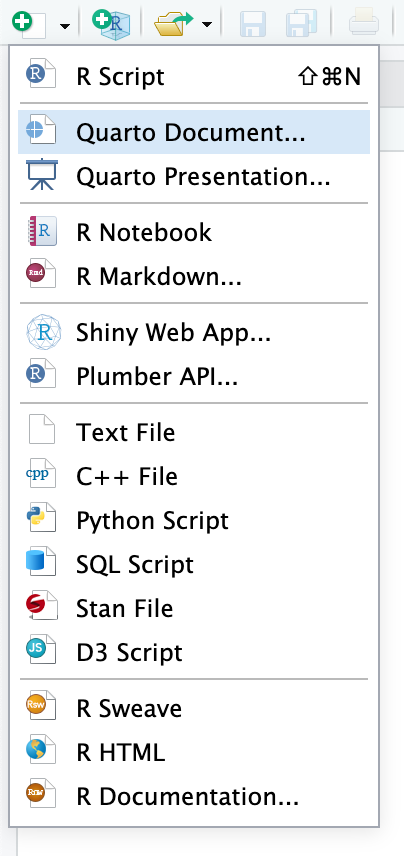
In the new prompt, enter a title, author name, and press “Create”
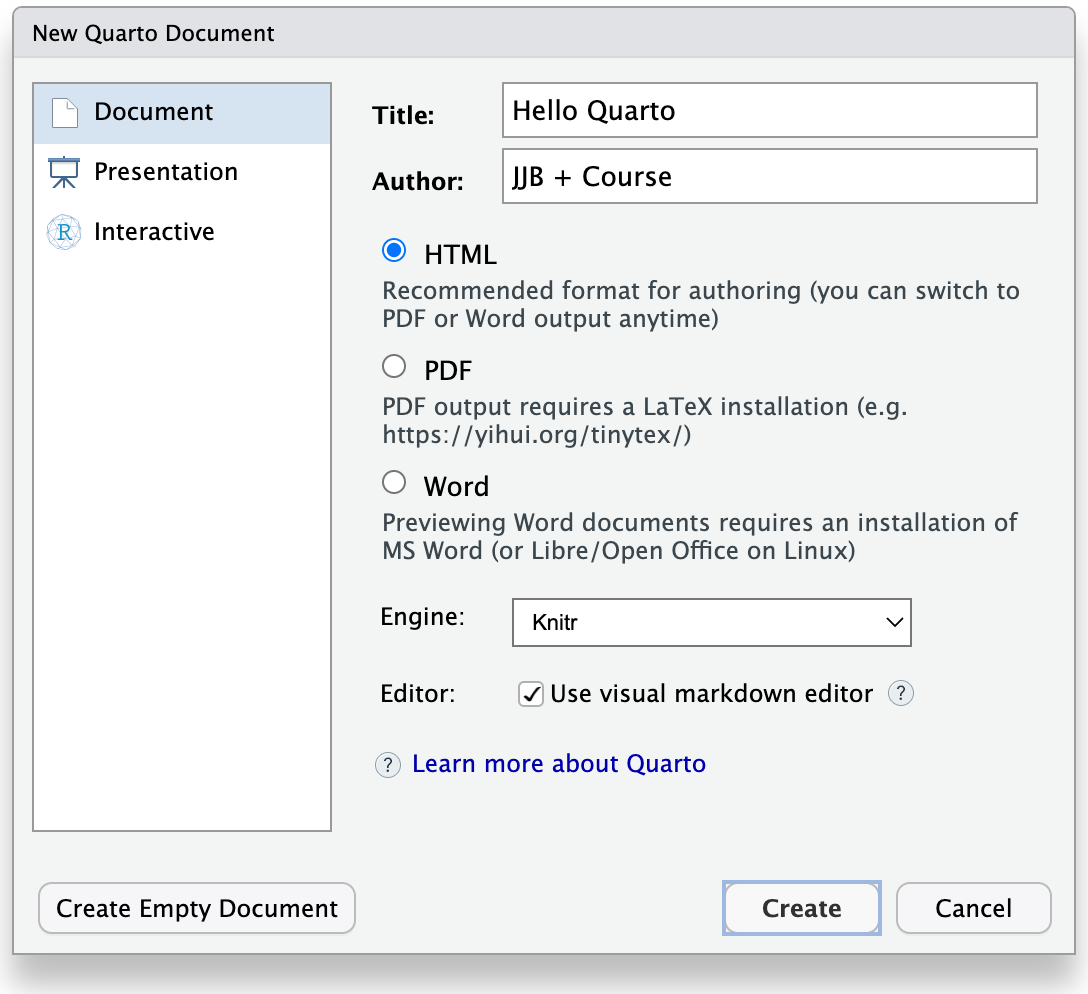
Annotated Quarto Document
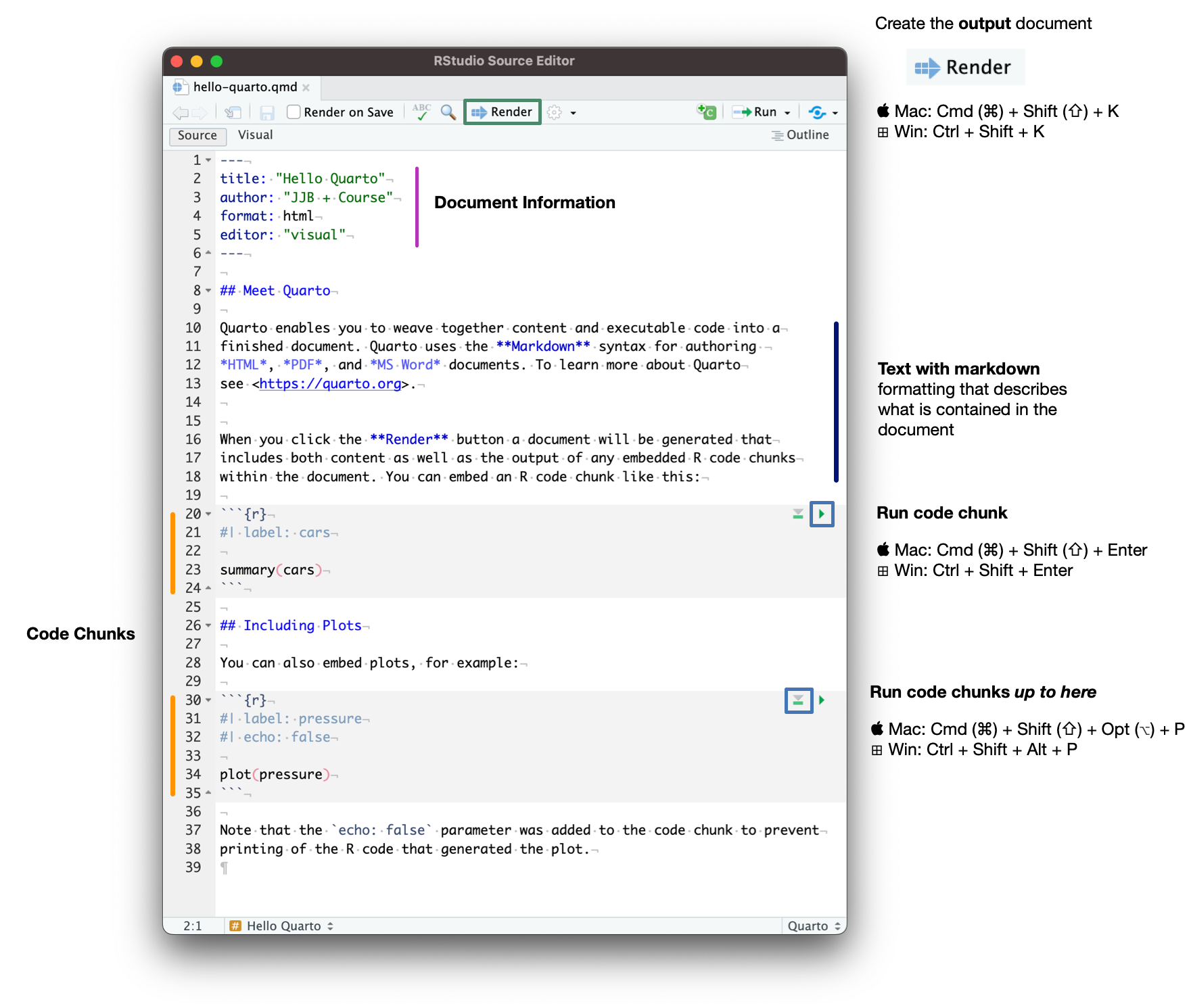
Annotated sections of the “Hello Quarto” document related to document information, text formatting, and code execution
Output of a Quarto Document
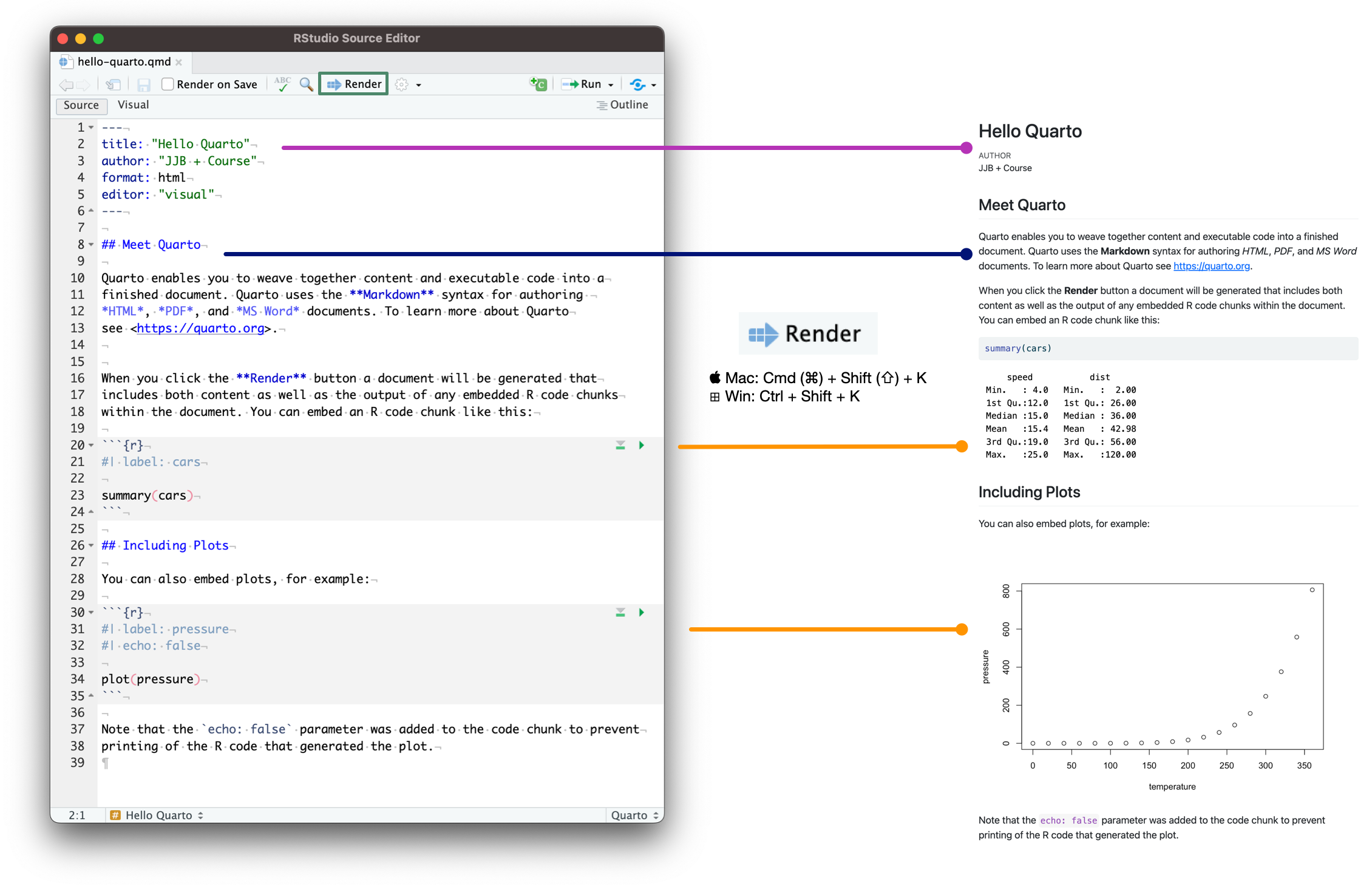
Annotated source to output of the “Hello Quarto” document
Navigating a Quarto Document
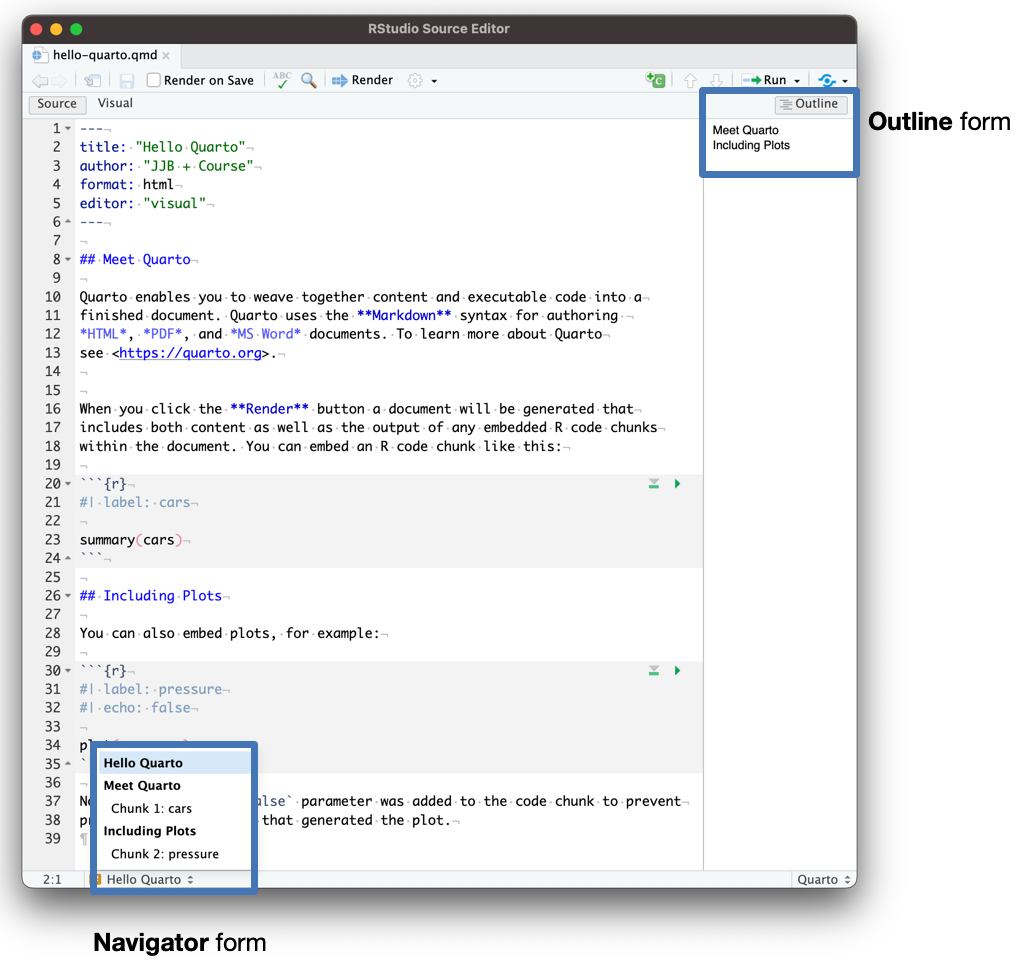
Annotated “Hello Quarto” document navigation options
Writing in Markdown
A World Without Markdown
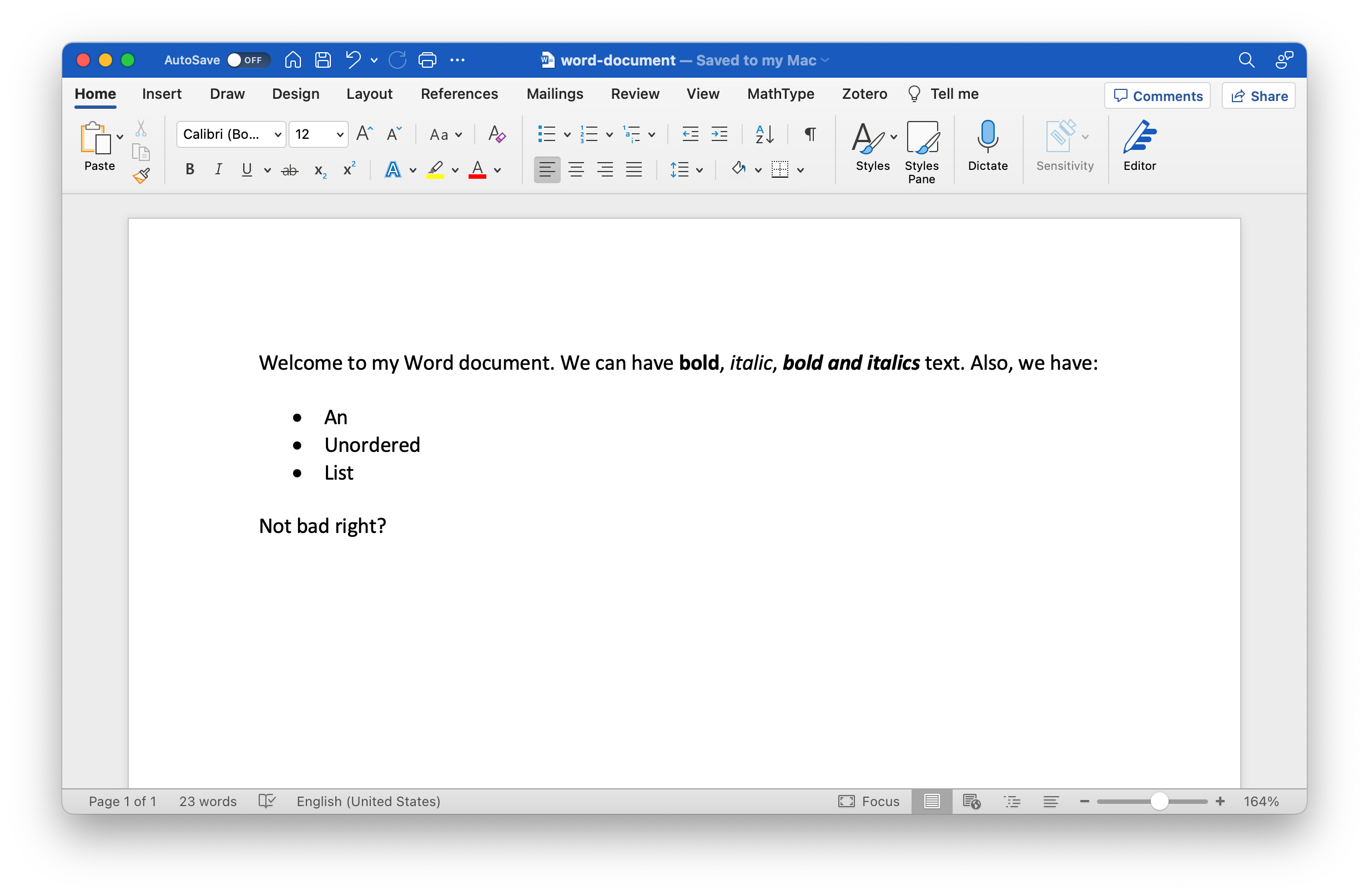
Example of a Word document word-document.docx
A World Powered By Microsoft’s Markup
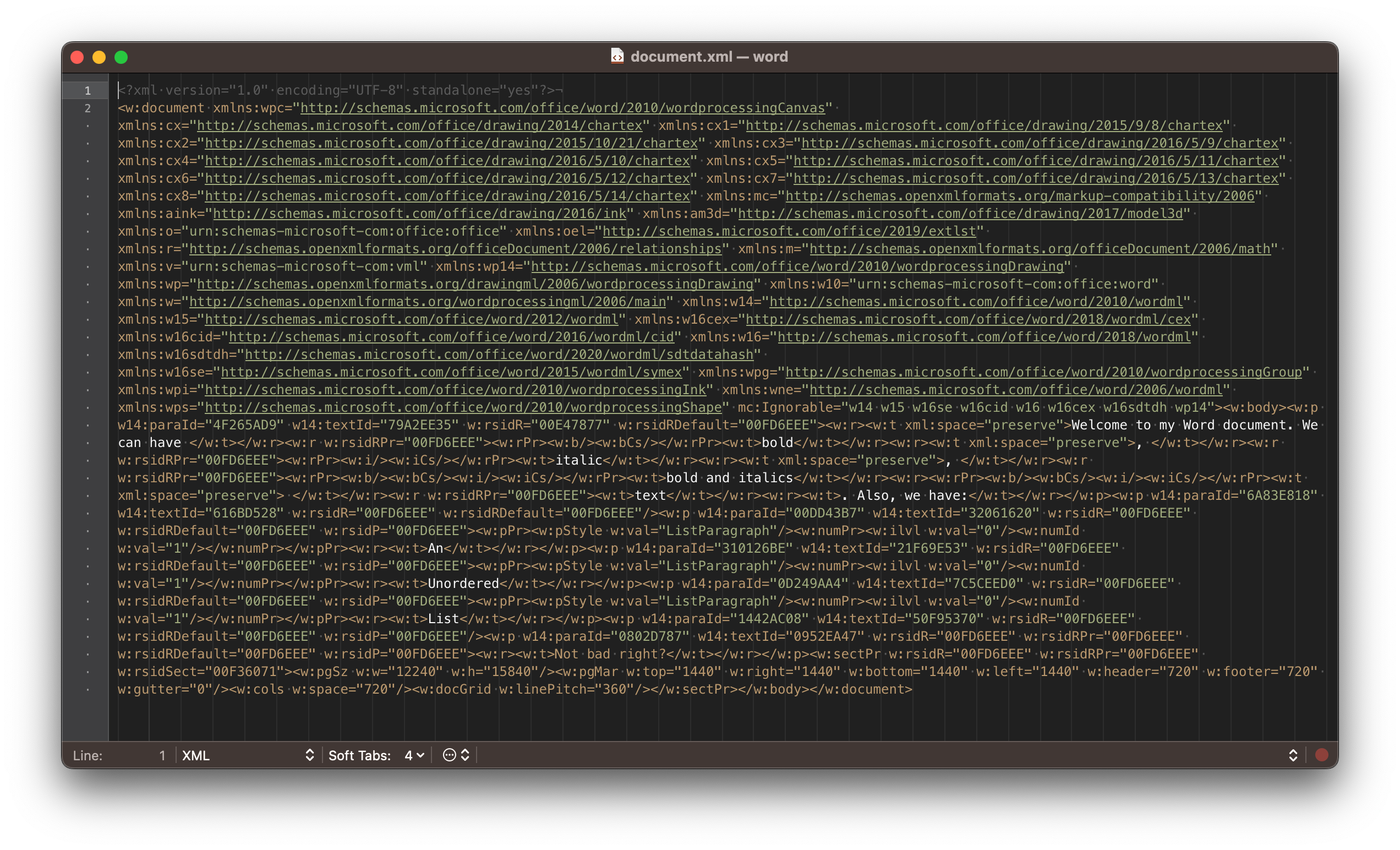
unzip word-document.docxAside: Word’s Format
A World With HTML
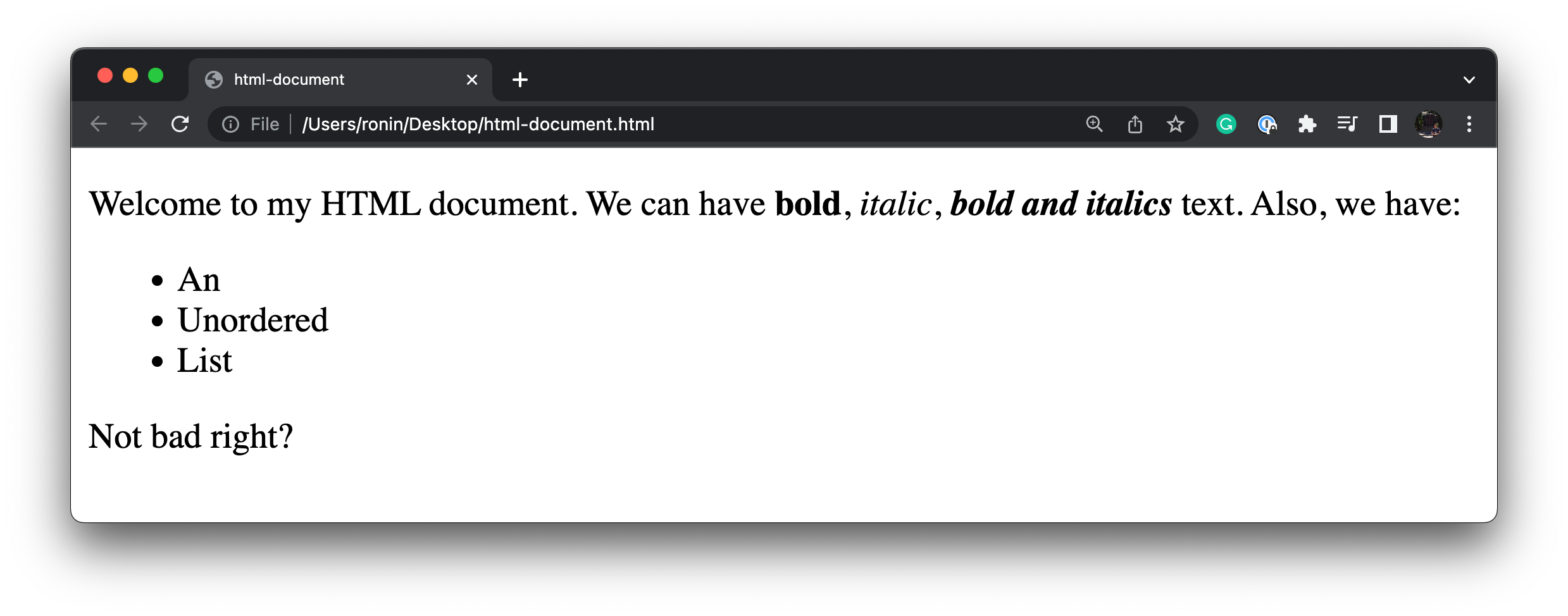
Sample HTML Webpage mirror the word document
A World With HTML Document Source
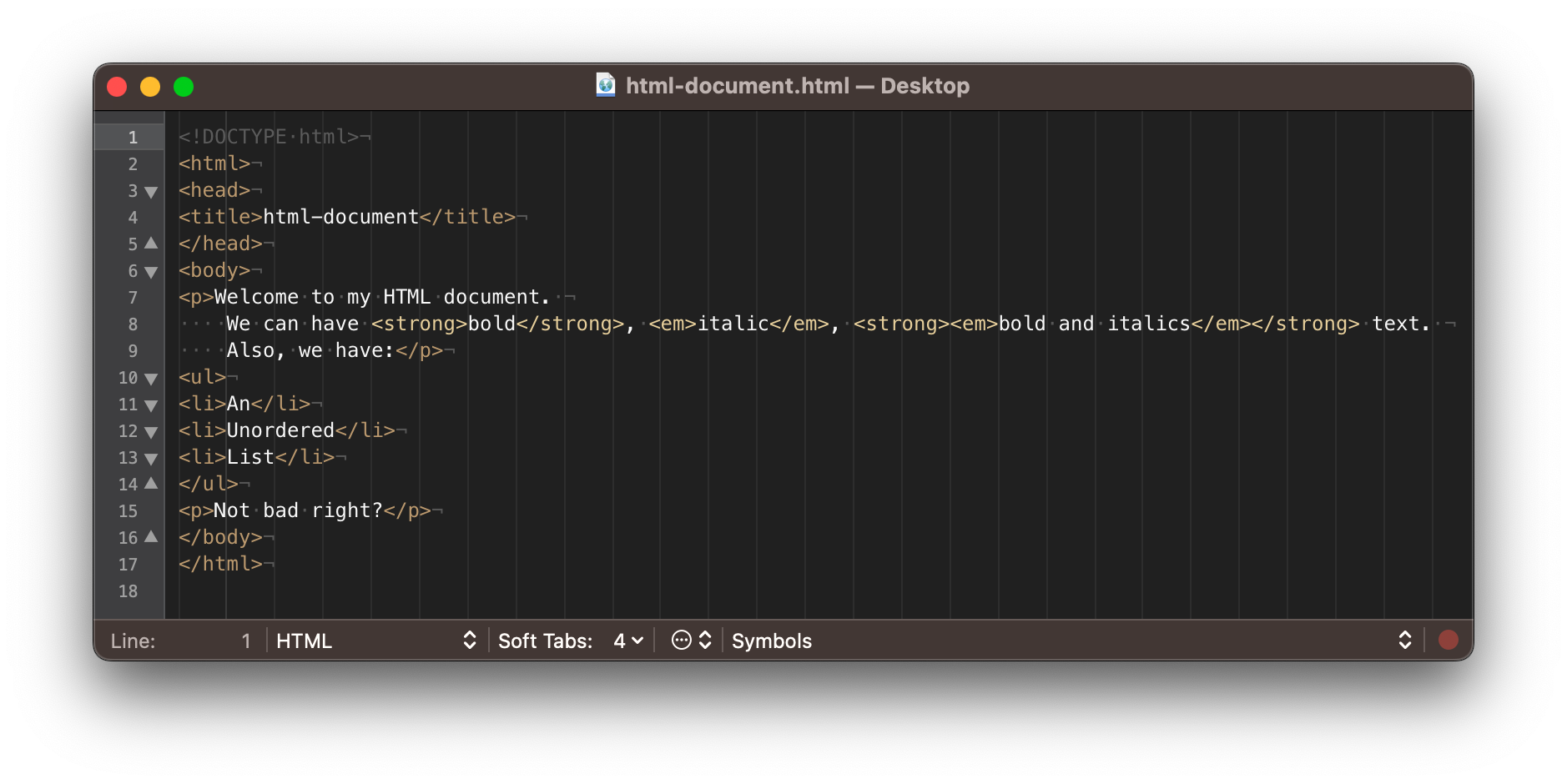
Source of the sample HTML webpage
A World With Markdown
Markdown is the
lingua franca
to creating any kind of document
Markdown in the Wild: Reddit
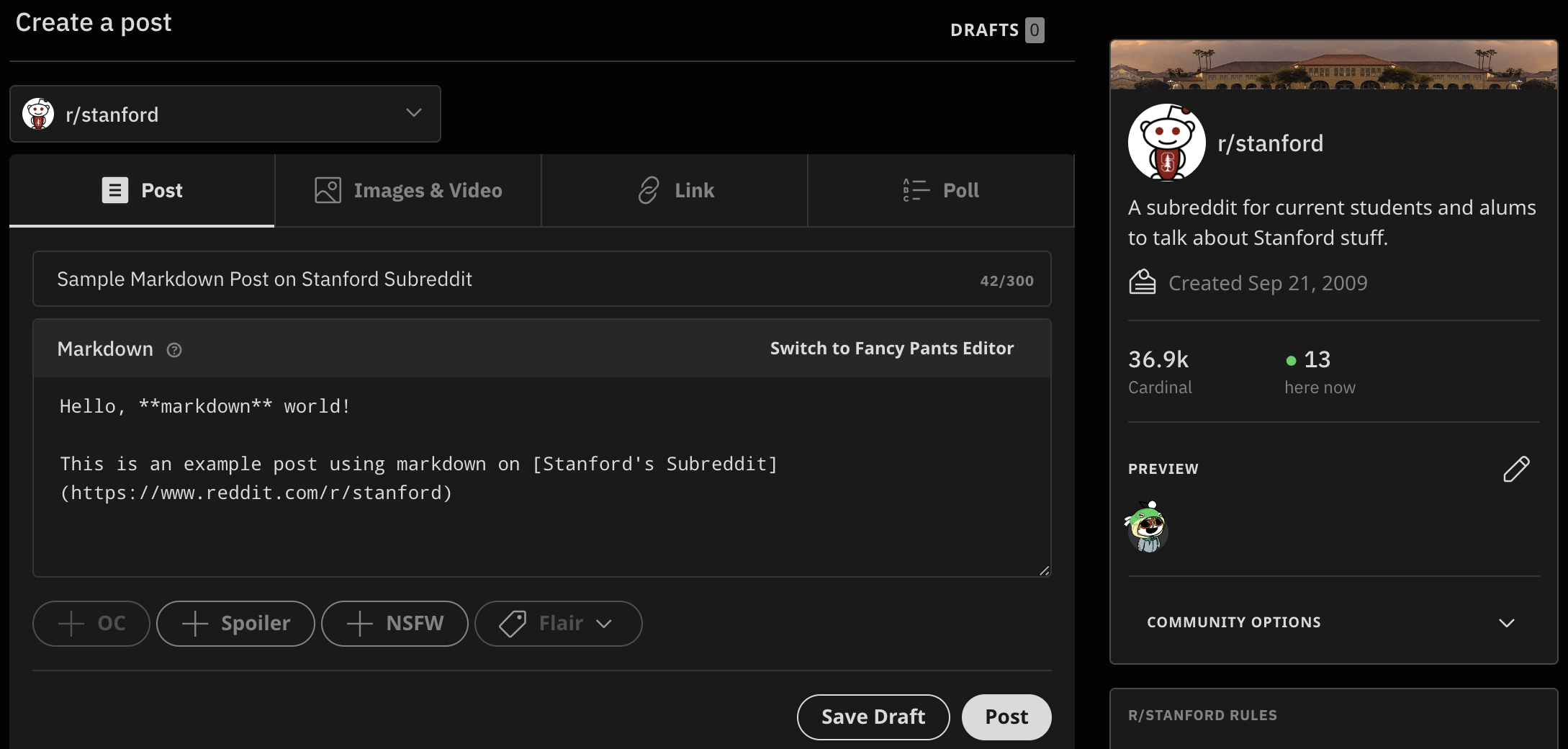
Writing a post using markdown on Stanford’s Subreddit
Markdown in the Wild: GitHub
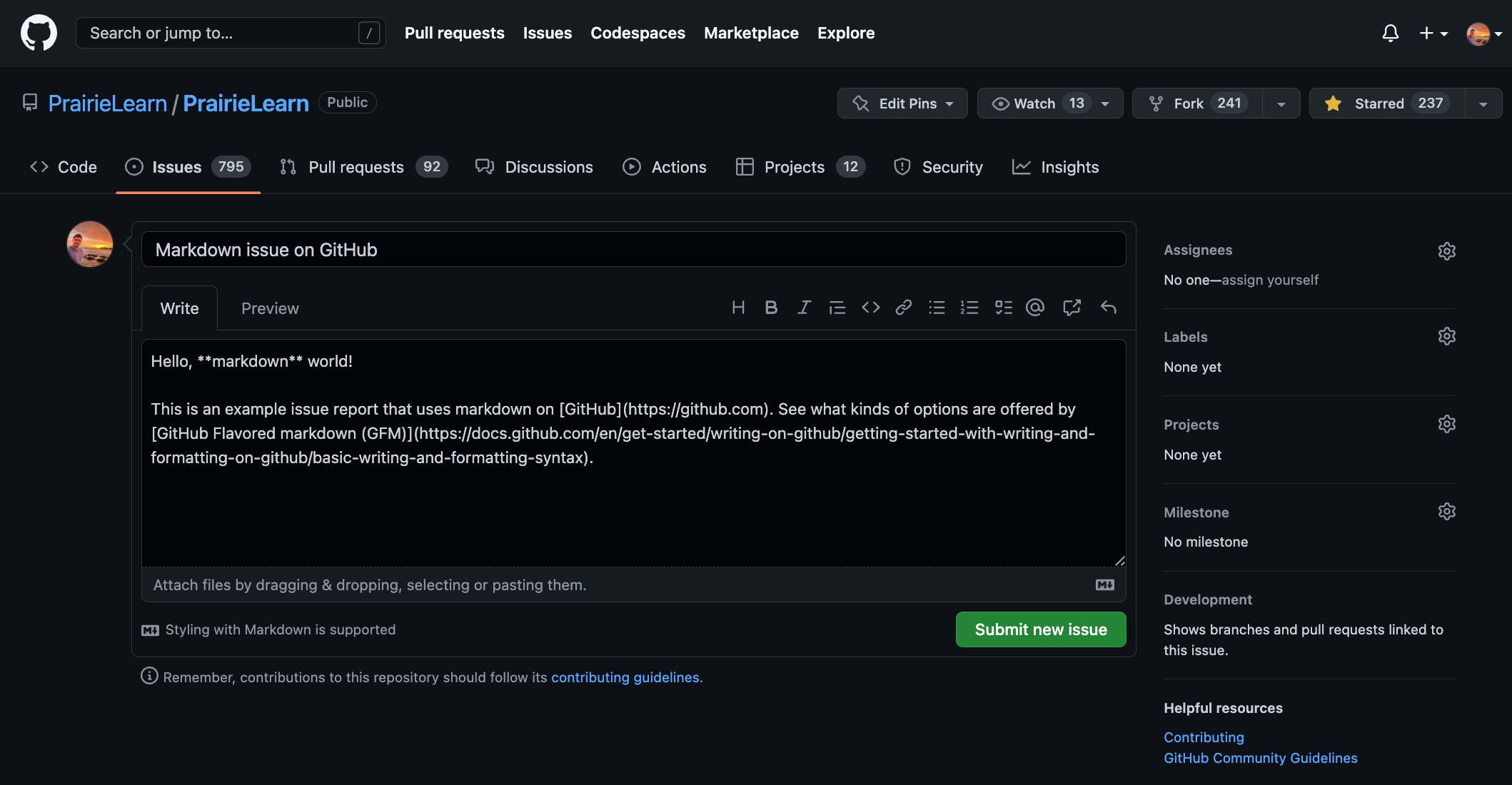
Writing an issue using markdown on GitHub
Markdown Quick Reference In RStudio
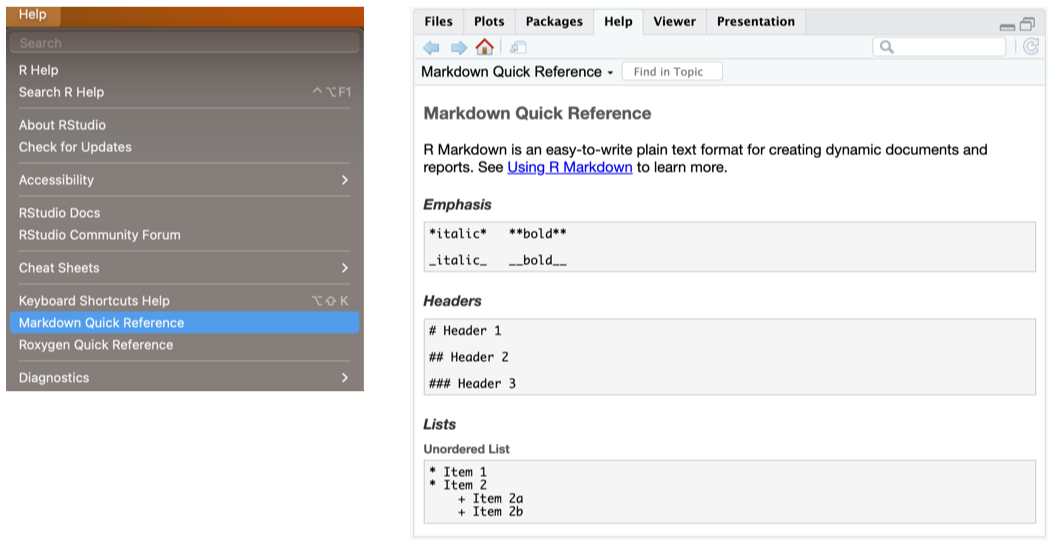
Text Formatting
Linking
Code
Output
Line breaks create a new paragraph.
Links can be hidden e.g. Stanford or not https://stanford.edu/.
Images
Code
Relative Path Image
Absolute Path Image
Output
(Repeated 3 Times…)
Images: Path Warning
Important
Relative paths are the best to use to share your work with others as they are operating system independent. For example, do you have a user called “jjb” on your computer with a folder “img”?
Quotes
Math
Header Sizes
| Markdown Syntax | Output |
|---|---|
|
Header 1 |
|
Header 2 |
|
Header 3 |
|
Header 4 |
|
Header 5 |
|
Header 6 |
Lists: Unordered
Lists: Ordered
List: Summary
Important
Make sure a new line (space) exists between text and the first list item. For sublists or nested lists, indent four spaces to create a new level in the list.
Tip
To simplify ordered lists and allow for moving items in the list around, use 1. for each item. If a list needs to be broken, numbering is only continued if each entry is labeled using 1., 2., 3., … format.
Tables
Code
| Left | Center | Right |
|-------------------------|:---------------:|--------:|
| Hey, check it out | Colons provide | 873 |
| its **Markdown** | alignment thus | 1000 |
| right in the table | *centered* text | |Output
| Left | Center | Right |
|---|---|---|
| Hey, check it out | Colons provide | 873 |
| its Markdown | alignment thus | 1000 |
| right in the table | centered text |
Table: Tip
Tip
Visual mode provides a Table menu to setup quarto tables or use the table generator website.
Writing with Quarto
How Quarto Works
Quarto handles literate programming by using a series of programs:

How Quarto Works (Source)
knitrexecutes all code chunks and creates a new markdown (.md) filepandoctakes the markdown file generated and converts it to the desired format.- Render inside of RStudio handles the interaction.
Source vs. Visual Mode
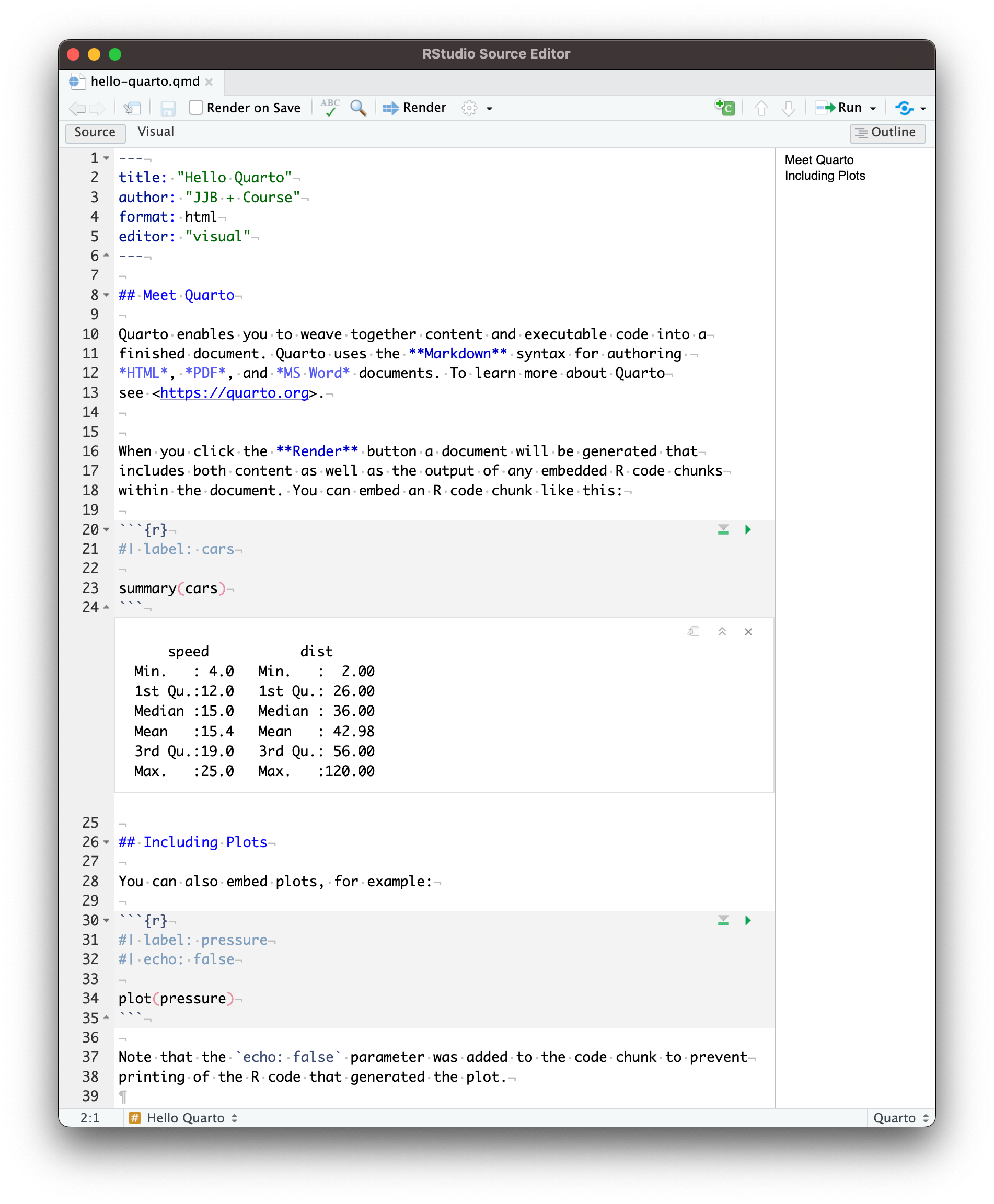
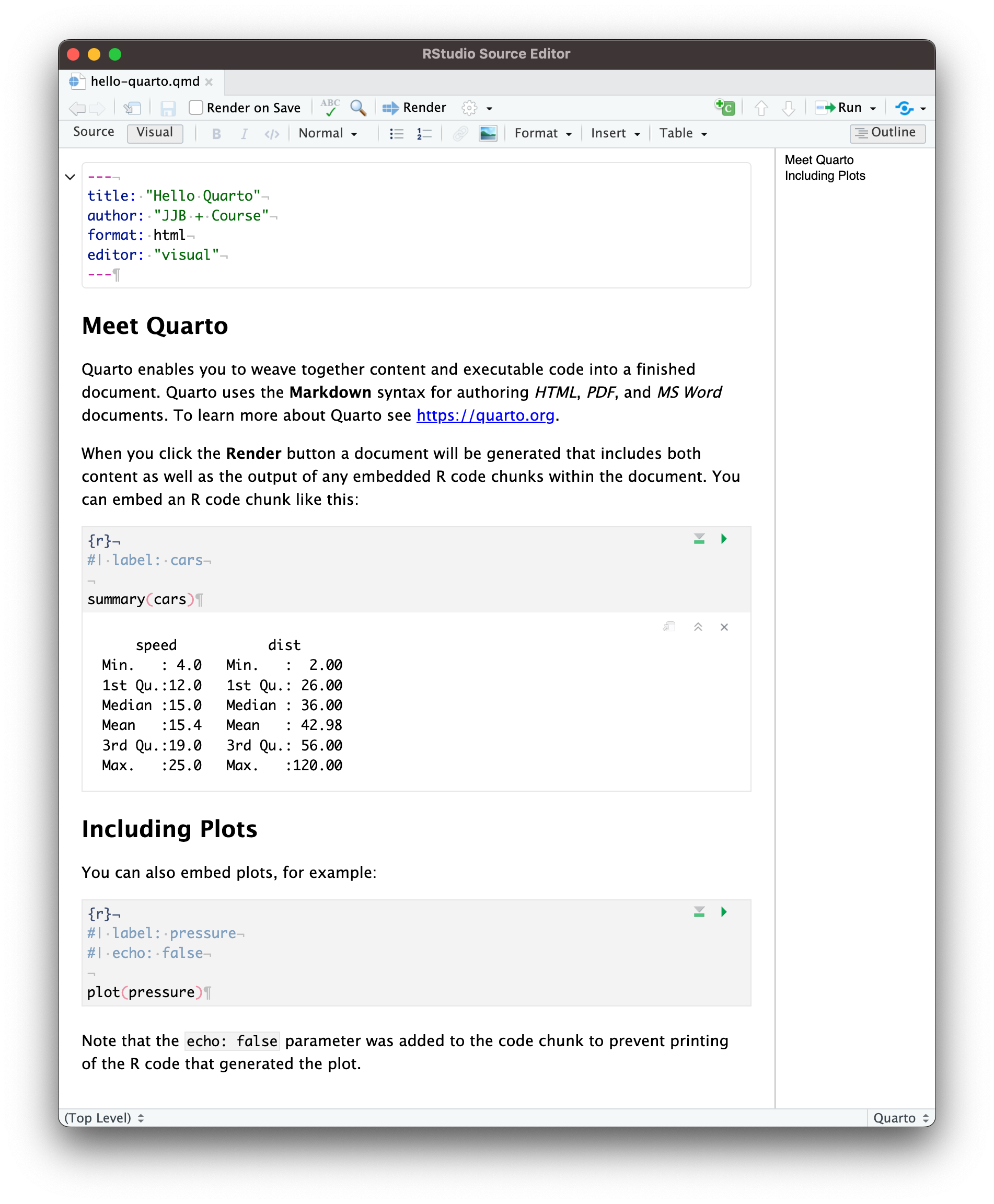
Visual Mode represents a What You See Is What You Get (WYSIWYG) editor. This mode is similar to Word.
Render a Quarto Document
You can render a Quarto documents by using this shortcut in RStudio:
- Mac:
Cmd (⌘) + Shift (⇧) + K - ⊞ Win:
Ctrl + Shift + K
Or, you can press the “Render” button in either Source or Visual Mode.

Rendering a Quarto Document using “Render”
Code Chunks: Text + Code + Output
Example
Insert chunk into qmd by typing or using [⌘/Cntrl + ⌥/Alt + I]
(Aside) Pets or Livestock
Important
Please make sure to label your code chunks! It helps with debugging.
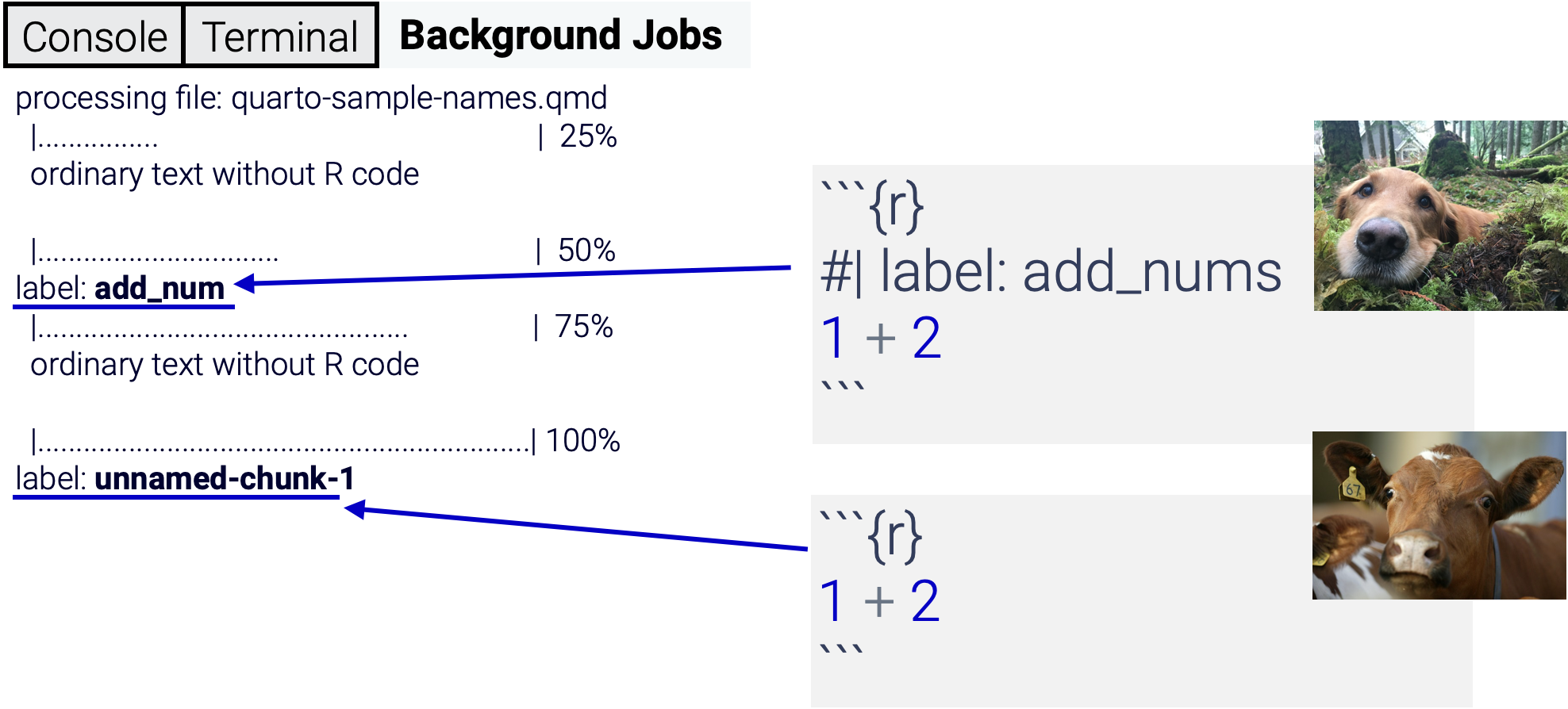
Sample of Code Chunk Options
Customize Code Execution Options
| Option | Description | |
|---|---|---|
eval |
Evaluate the code chunk. | |
echo |
Include the source code in output | |
output |
Include code output results (true, false, or asis) |
|
warning |
Include warnings in the output. | |
error |
Include errors in the output (continues execution if error present). | |
include |
Catch all for preventing any output (code or results) from being included. |
Customize Code Execution Options
Note
- Additional quarto options: https://quarto.org/docs/computations/execution-options.html
- If using R, all the options of
knitrare available: http://yihui.name/knitr/options
Demo: echo option
echo hides code, but shows results.
Demo: eval option
eval shows code, but does not create results.
Inline code
Enclose the R expression using `r `.
Code:
There are `r nrow(cars)` observations in our data.
Output:
There are 50 observations in our data.
Important
If using Visual or Source mode, be advised the R expression will only substitute the value held by the variable when the Quarto document is rendered. That is, the value contained within the expression only appears in the output file.
Reference Code Chunk Variables Inline
Code:
The _mean_ of **x** is `r x_mu` and
the _standard deviation_ is `r x_sd`.
Output:
The mean of x is 5.5 and the standard deviation is 3.02765.
Properties of a Quarto Document
Customization Header
The title, author, date, output format, and editor type is stored in the beginning or head of the quarto document. The data is stored according to the YAML Ain’t Markup Language (YAML)1 format.
Render Options
Render as an HTML document
Render as a PDF
Render as a Word document
Multi-format Render Options
Render one Quarto document to many output options like HTML, Jupyter Notebook, PDF, and Word Document.
---
title: "Hello Quarto"
author: "JJB + Course"
format:
html: default
ipynb: default # new format!
pdf: default
docx: default
---Note
Quarto supports many formats include PowerPoint (PPT), Revealjs, Beamer, Rich Text Format (RTF), and on. For details, see All Formats.
Selecting a Single Render Format
Using the ![]() Render button’s drop down menu, we can select a single output format to create.
Render button’s drop down menu, we can select a single output format to create.
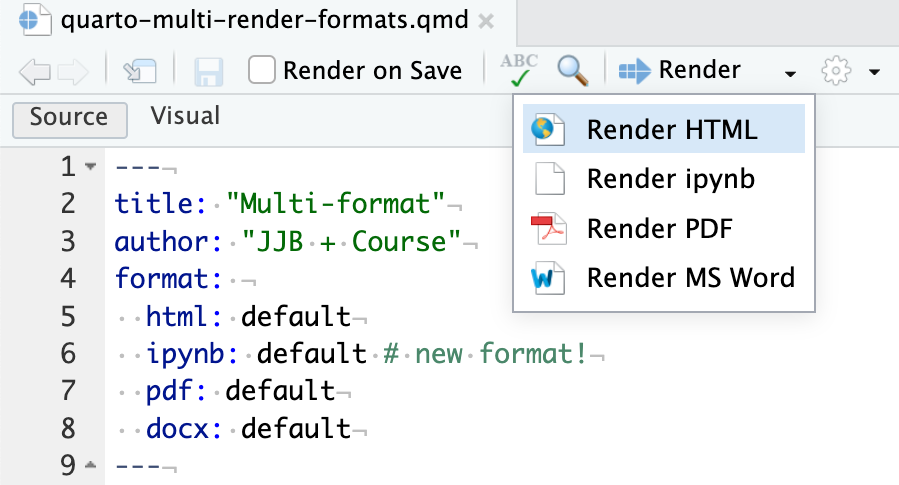
Customizing Specific Output Formats
In this example, we customize the html and docx format.
---
title: "Hello Quarto"
author: "JJB + Course"
format:
html:
toc: true
code-fold: true
ipynb: default
pdf: default
docx:
number-sections: true
highlight-style: github
---Note
For individual format options, please find the format on the All Formats page of the Quarto user guide.
A brief history
Iteration 1: Sweave
Literate programming has been a huge focus of the R community.
Officially, the
Sweave(.Rnw) system backed by R-core allowed for literate programming.Championed by Fritz Leisch, who was an R Core Member that recently passed away.
Iteration 1: Sweave
However, the system required extensive use of LaTeX, which marks up text, to combine R code with prose.
Plus, there were a few useful options such as saving long running code chunk results to avoid needing to re-calculate the output that were missing.
Sample Sweave code chunk:
Iteration 2: knitr & rmarkdown (.Rmd)
Looking at the weakness of the Sweave feature set, the
knitrpackage was created with a focus on improving options within LaTeX.A little bit later, the
rmarkdownpackage arrived on the scene to lower the barrier of entry by allowing for markdown to used to interweavercode and results.Sample Rmarkdown code chunk:
Iteration 3: Quarto (.qmd)
The focus on using
rmarkdownto create reports drew widespread acclaim after its debut in 2014. (See J.J. describermarkdownin 2016.)However, the name
rmarkdownconstrained the report format to just R.As data science is a polygot field, that is you need to speak more than one language (e.g. Python, R, Julia, SQL, C++, …), the idea for a language agnostic framework was born.
Iteration 3: Quarto (.qmd)
Quartois the manifestation of being able to work with multiple languages without needing R (you could just use a Jupyter kernel).Sample Quarto code chunk:
Summary: Part I
- Code for Humans
- Write code in a human-friendly way for consumption by humans not computers with literate programming.
- Scientists aim for the Golden Standard of experiments being replicable.
- Statisticians/Data Scientists aim for being able to reproducible computations
Summary: Part II
- Markdown
- Focuses on plain text that is human readable and customizable.
- Quarto
- Combine code with a narrative analysis in a reproducible manner.
